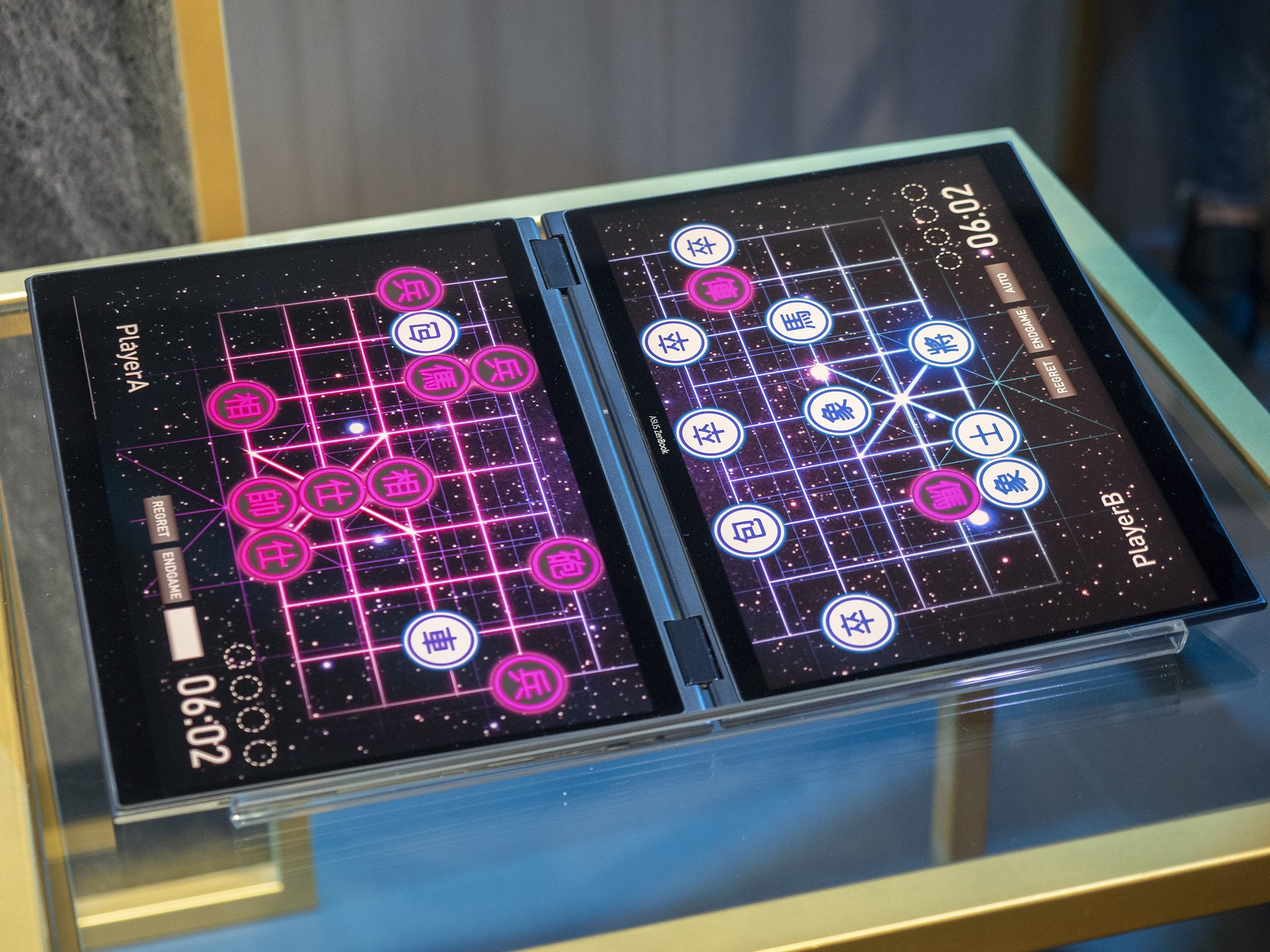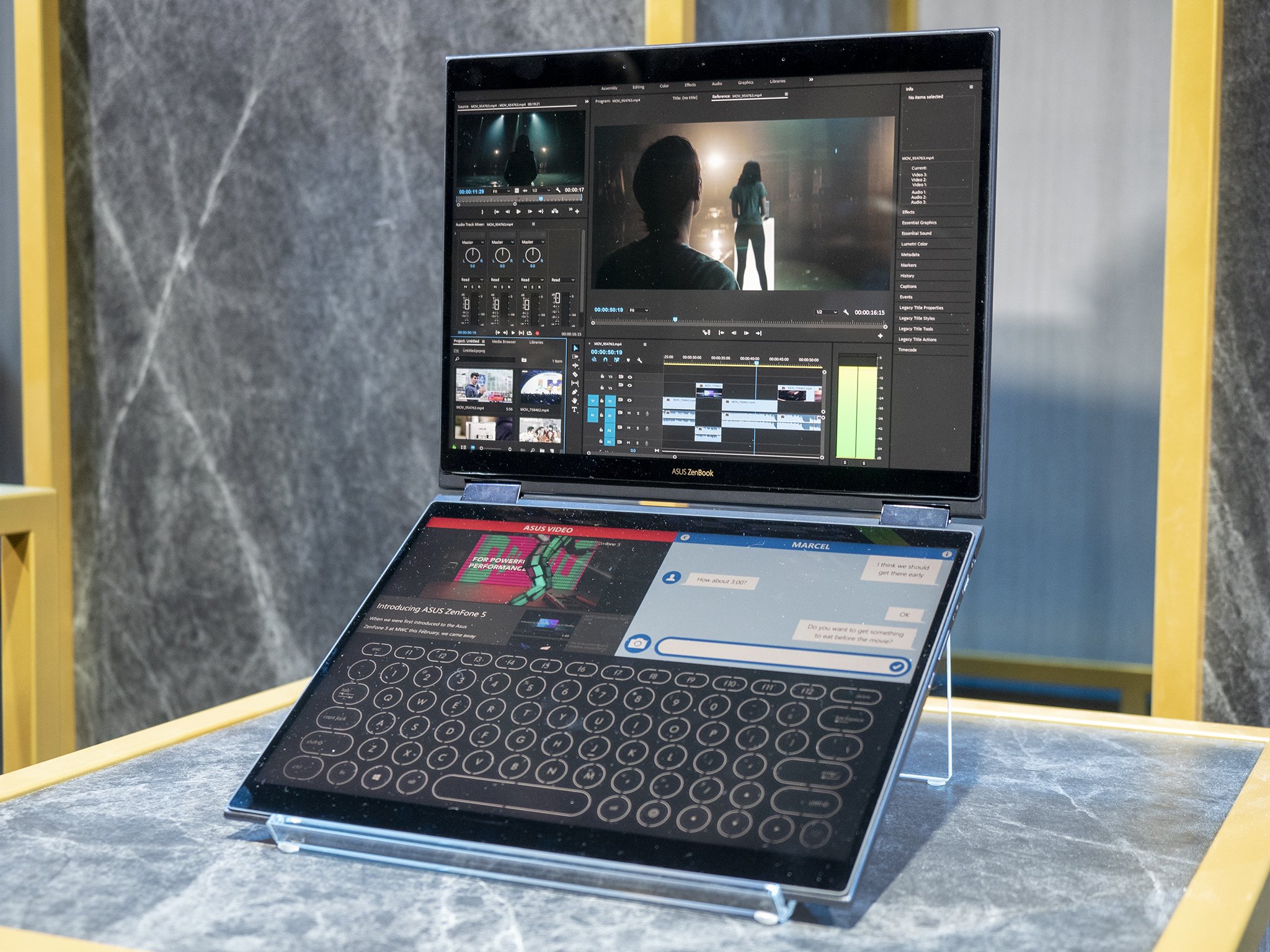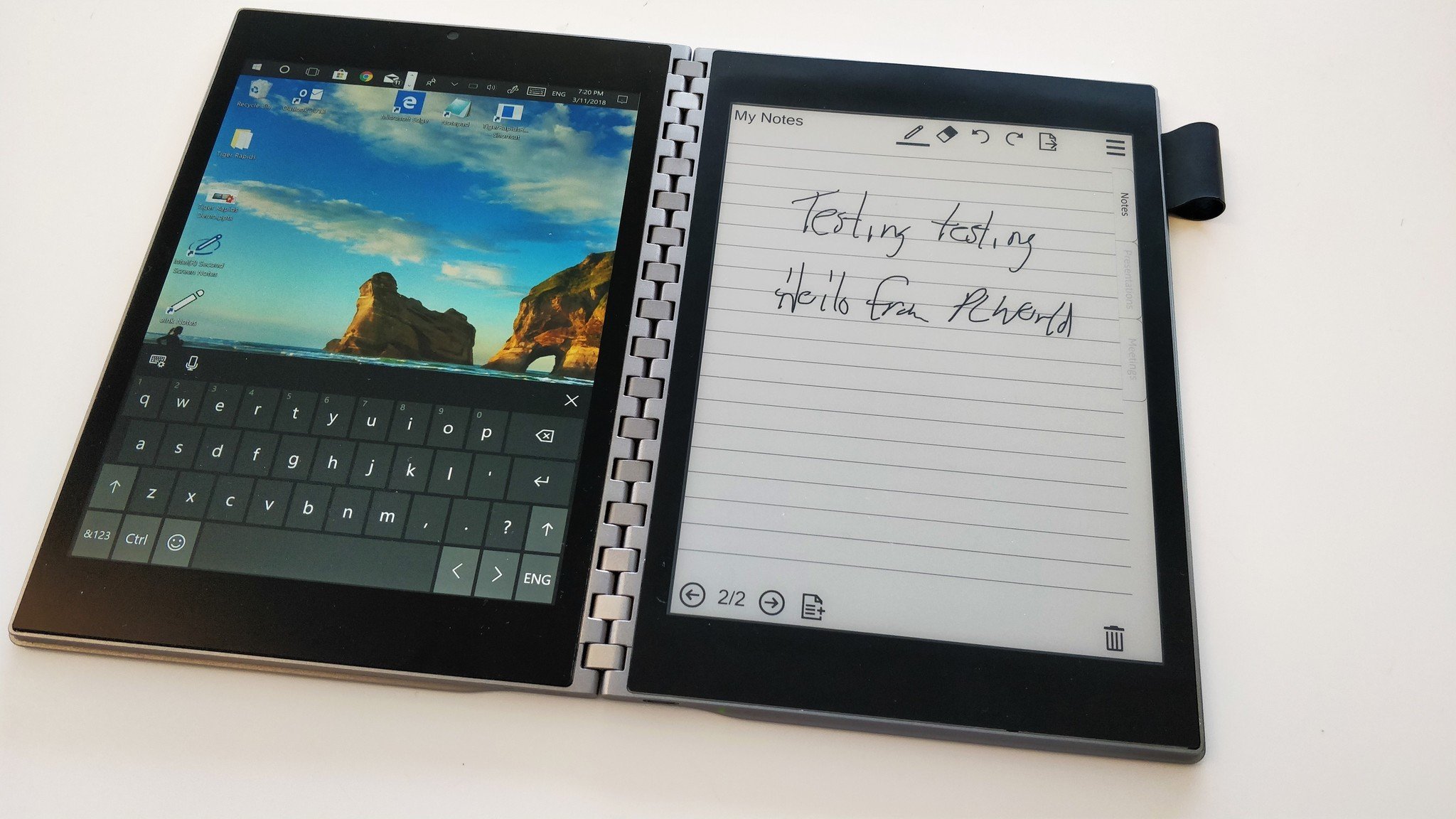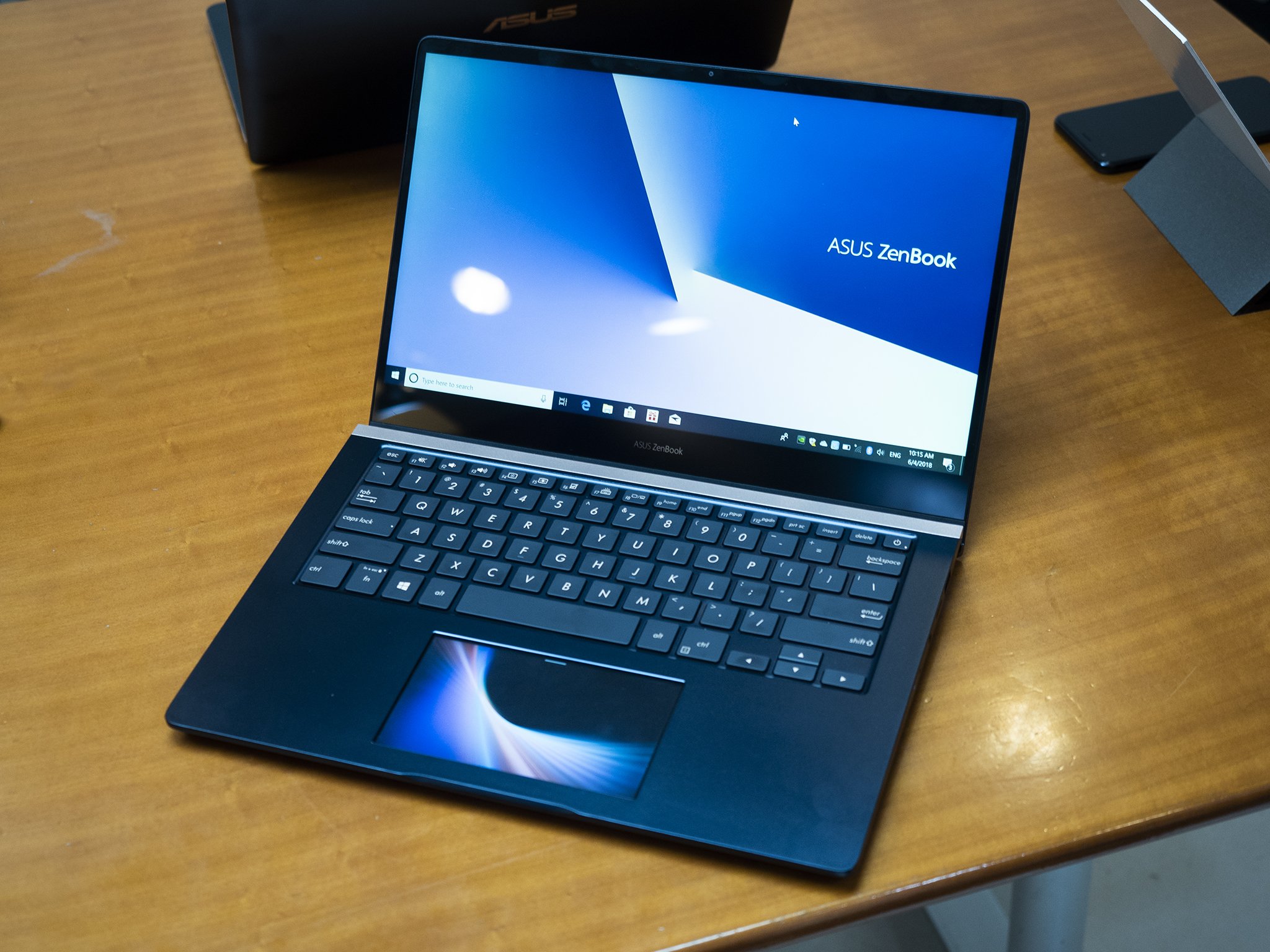Computex 2018 spotlighted dual-screen Windows 10 PCs — but are they just novelties?
This week, we caught a glimpse of a future trend for PCs, and it's dual displays. But will they really solve any problem?

Back in January, I wrote an article predicting that the next wave of innovation around the 2-in-1 PC category would be devices with dual displays. We have seen such devices before, including 2011's Acer Iconia 6120, and more recently, the Lenovo Yoga Book. But there is now a concerted effort to usher in these devices again to the consumer market.
While many dismissed the idea of dual-screen PCs, this week at Computex revealed a handful of forthcoming PCs with two screens. These devices won't be for everyone, but they open the floodgates for new ideas and concepts.
PCs announced at Computex

Lenovo and ASUS were the big pushers of dual-screen devices at Computex, but Intel was pulling strings behind the scenes.
ASUS had two dual-screen devices. One is the ZenBook Pro 15, which packs a 4K display and a smaller, secondary display in the trackpad. That laptop keeps the physical keyboard and is a very interesting deviation from the idea of dual-displays. Expect the ZenBook Pro 15 to launch in the coming months.
The other ASUS laptop is the futuristic "Project Precog". The Precog has two full displays with no physical keyboard, and it genuinely looks like it's from the future. That laptop is more of a concept device but the company does plan to bring it to market in 2019.
Lenovo teases a sequel to its Yoga Book, which is expected to launch later this year. Not much was revealed about version two, but it will be running the latest chip from Intel, and it won't be using the underpowered Atom processor that marred the experience of the first edition. There has been some speculation that its bottom half may use e-Ink instead of a secondary LCD, which leads us to Intel.
Intel is leading the push for dual-display PCs, along with Microsoft. The company previewed a few reference designs for manufacturers to run with. One is called "Tiger Rapids" and pairs a traditional 7.9-inch LCD with an electronic paper display (EPD) on the right. An Intel Kaby Lake processor powers it with an ultra-thin solid-state drive (SSD).
All the latest news, reviews, and guides for Windows and Xbox diehards.

From one of our recent news stories on the subject:
A second dual-screen prototype is also being worked on in Intel's labs, albeit without a code name. The design is similar to Tiger Rapids, but with a traditional display panel on each side. The displays can be rotated between traditional laptop or tent mode, and everything in between. While in laptop mode, users type on the glass of the bottom display.
Even Dell is reportedly playing around with a dual-screen mobile device.
The news out of Computex follows months of rumors and patents from Microsoft, which is expected to set the stage for dual screen devices later this fall with its Project Andromeda, which we believe to be a foldable tablet device.
Why this is a big deal

I argued back in January that 2-in-1s, as we know them, are now an established category. In fact, besides gaming PCs, 2-in-1s are one of the only classes that have garnered growth and interest from consumers during the last few years.
But even convertibles are not immune to a stagnant and mature market. As IDC's latest forecast points out, this category is also plateauing with slower sales than previous years. As consumers fall into multi-year replacement cycles (combined with an increasing dependence on larger screen smartphones), the rush to buy the latest laptop is a tough sell.
Ryan Reith sums it up this way in IDC's May 2018 report:
However, we continue to see pockets of opportunity and growth when you peel back the onion. With notebook PCs it's clear that marketing and development resources are being poured into premium/gaming, convertibles, and thin and light devices. All OEMs, some of which are new to the space, seem to be laser-focused on these areas.
This potential is one reason why companies like Qualcomm are getting in on PCs. The real interest from consumers is around either ultra-light, premium convertibles (with the bonus of LTE and long battery life), or high-end gaming rigs that can let users jump into the latest craze of "battle royale"-style gaming.
Unlike in the past, however, Microsoft and its partners are taking a more proactive stance by trying to innovate around the PC continually. This week's Computex push, where we saw multiple dual-display devices, is a testament to that urgency and shows more of a concerted effort rather than typical random OEM experimentation.
Of course, the elephant in the room is practicality. While these devices look cool, how will consumers take to them when it comes to typing? An analogy can be drawn to smartphones circa 2007 where physical keyboards were the optimal solution. It was that year the first iPhone demonstrated that on-screen keys could be good enough for many users.
The issue this time is we have yet to see what the solution is for PCs with dual displays. Lenovo mentioned leveraging A.I. to help with word prediction, but it is unclear just what that means or how well it will work.
There is also the argument that like 2-in-1s, such a dual-display category for PCs will have some false starts, close calls, hidden gems, and abject failures before finding its path. Most of the experimental designs for convertible PCs in 2012 are no longer with us in 2018.
At the very least, this new concerted effort for re-sparking interest in PCs is welcome. Microsoft looks to have learned and is living by HP's slogan: "Keep reinventing."
Cautious optimism

In and of themselves, dual-display PCs will have to demonstrate true utility to consumers. If not, they will be seen as another novelty. Right now, we're in that stage. It looks cool, but will it make your computing life better? We don't know.
How does typing fare with such designs? How does A.I. help in this area (if at all)? And what engineering solutions can woo the consumer away from physical keyboards?
Most of these related challenges should be solvable – but they require the right engineers, ideas, patents, and execution.
Finally, like all different types of PCs, dual-display devices won't be for everyone. Artists, engineers, musicians, creators, or those who consume data will be the biggest beneficiaries. These are the categories where other input modalities could take precedence over strict typing.
I believe we should embrace the change and experimentation, and see where the tech takes us.

Daniel Rubino is the Editor-in-chief of Windows Central. He is also the head reviewer, podcast co-host, and analyst. He has been covering Microsoft since 2007 when this site was called WMExperts (and later Windows Phone Central). His interests include Windows, laptops, next-gen computing, and wearable tech. He has reviewed laptops for over 10 years and is particularly fond of 2-in-1 convertibles, Arm64 processors, new form factors, and thin-and-light PCs. Before all this tech stuff, he worked on a Ph.D. in linguistics, performed polysomnographs in NYC, and was a motion-picture operator for 17 years.
